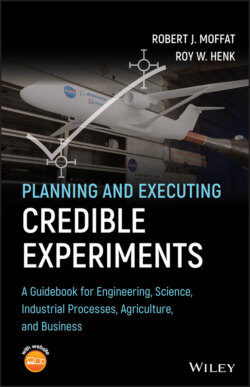Читать книгу Planning and Executing Credible Experiments - Robert J. Moffat - Страница 37
2.4.2 Persistence
ОглавлениеAn analysis is a persistent thing. It continues to exist on paper long after the analyst lays down his or her pencil. That sheet (or that computer program) can be given to a colleague for review: “Do you see any error in this?”
An experiment is a sequence of states that exist momentarily and then are gone forever. The experimenter is a spectator, watching the event – the only trace of the experiment is the data that have been recorded. If those data don’t accurately reflect what happened, you are out of luck.
An experiment can never be repeated – you can only repeat what you think you did. Taking data from an experiment is like taking notes from a speech. If you didn't get it when it was said, you just don't have it. That means that you can never relax in the lab. Any moment when your attention wanders is likely to be the moment when the results are “unusual.” Then, you will wonder, “Did I really see that?” [Please see “Positive Consequences of the Reproducibility Crisis” (Panel 2.1). The crisis, by way of the Ioannidis article, was mentioned in Chapter 1.]
The clock never stops ticking, and an instant in time can never be repeated. The only record of your experiment is in the data you recorded. If the results are hard to believe, you may well wish you had taken more detailed data. It is smart to analyze the data in real time, so you can see the results as they emerge. Then, when something strange happens in the experiment, you can immediately repeat the test point that gave you the strange result. One of the worst things you can do is to take data all day, shut down the rig, and then reduce the data. Generally, there is no way to tell whether unusual data should be believed or not, unless you spot the anomaly immediately and can repeat the set point before the peripheral conditions change.
